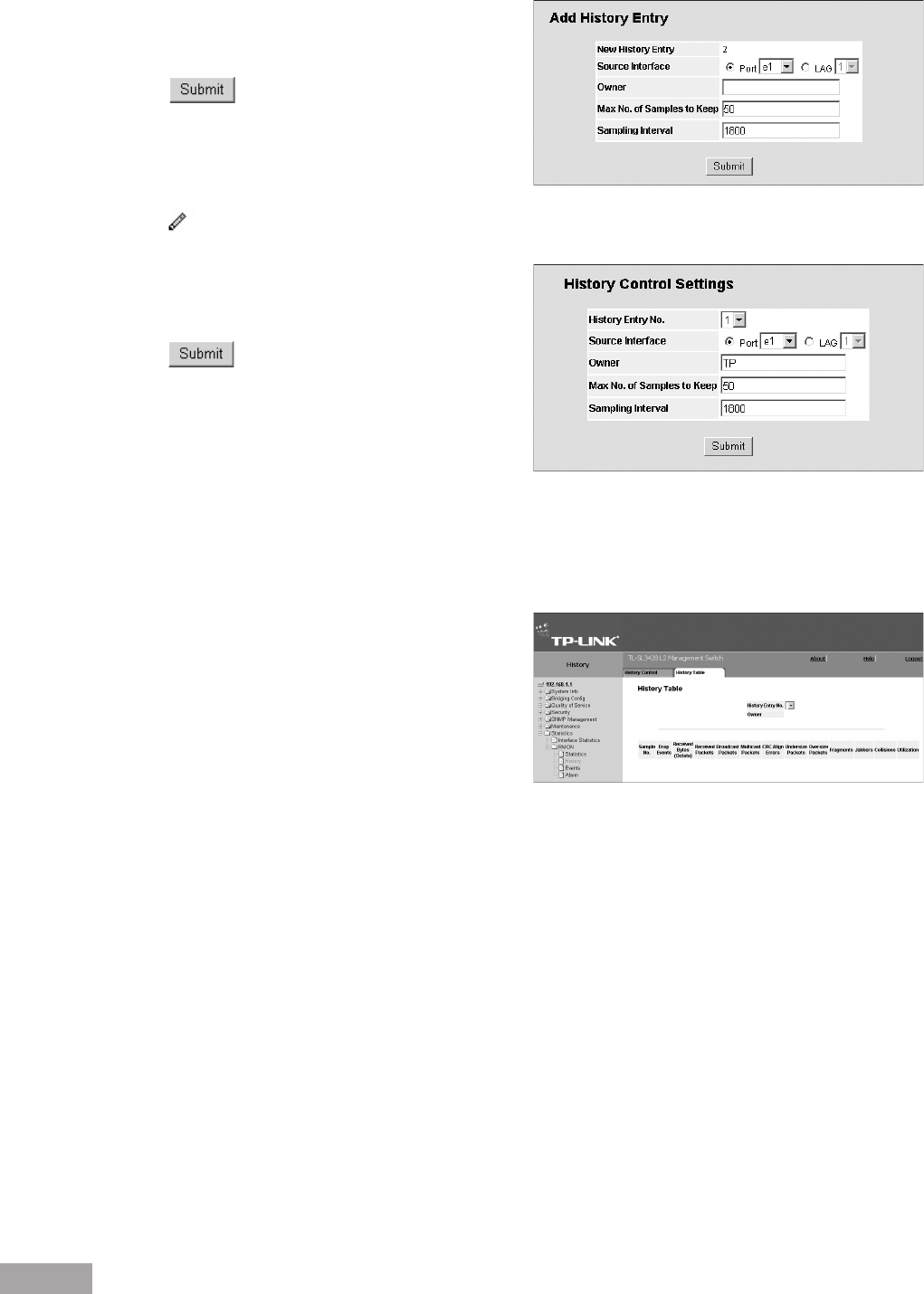
98
99
Figure 138: Add History Entry User Page
3. Dene the elds.
4. Click . The entry is added to the RMON
History Control Page, and the device is updated.
To modify a history entry user:
1. Open the RMON History Control Page.
2. Click . The Edit Local History Entry User Page opens:
Figure 139: Edit Local History Entry User Page
3. Dene the elds.
4. Click .The entry is updated in the RMON
History Control Page, and the device is updated.
15.2.2.2 Viewing the RMON History Table
The RMON History Table Page contains interface specic
statistical network samplings. Each table entry represents all counter values compiled during a single sample.
To view the RMON History Table:
1. Click System > Statistics > RMON > History > History Table. The RMON History Table Page opens:
Figure 140: RMON History Table Page
The RMON History Table Page contains the following
elds:
History Entry No. — Displays the entry number for the
History Control Table page.
Owner — Displays the RMON station or user that
requested the RMON information. The field range is
0-20 characters.
Sample No. — Indicates the sample number from which the statistics were taken.
Drop Events — Displays the number of dropped events that have occurred on the interface since the device was last
refreshed.
Received Bytes (Octets) — Displays the number of octets received on the interface since the device was last refreshed.
This number includes bad packets and FCS octets, but excludes framing bits.
Received Packets — Displays the number of packets received on the interface since the device was last refreshed,
including bad packets, Multicast and Broadcast packets.
Broadcast Packets — Displays the number of good Broadcast packets received on the interface since the device was
last refreshed. This number does not include Multicast packets.
Multicast Packets — Displays the number of good Multicast packets received on the interface since the device was last
refreshed.
CRC Align Errors — Displays the number of CRC and Align errors that have occurred on the interface since the device
was last refreshed.
Undersize Packets — Displays the number of undersized packets (less than 64 octets) received on the interface since


















